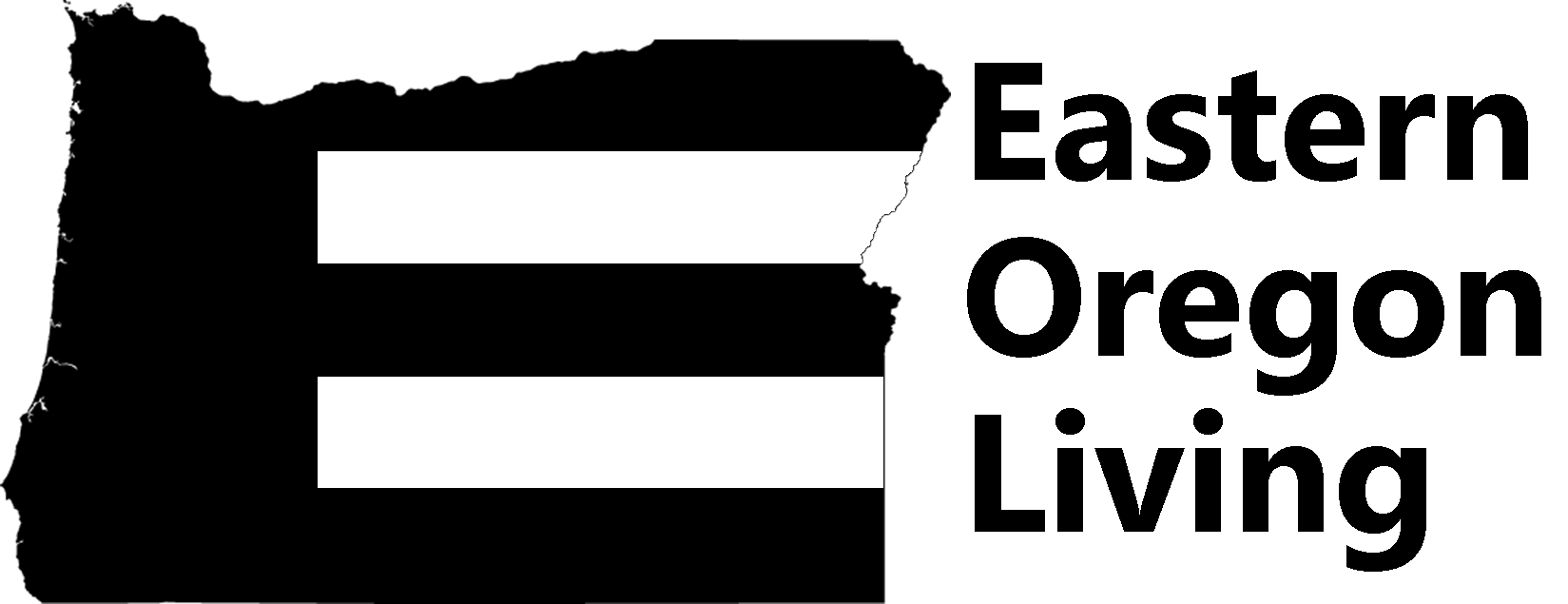(Shared by Commissioner George Murdock.)
In light of the fact we missed last week and because we have critical (but very good) news Update is coming out a day early.
To: Public Officials
From: George Murdock
Subject: Weekly Public Officials Update – Providing Information, Advocacy and Commentary
Date: April 5, 2021 – Volume 50
Total Cases – 7,877
Deaths – 82
Recent Counts:
Week 1 – 333
Week 2 – 237
Week 3 – 155
Week 4 – 96
Week 5 – 141
Week 6 – 104
Week 7 – 66 — (including 26 inmates)
Week 8 – 70 – (including 36 at EOCI & TRCI)
Week 9 – 67 – Including 17 at EOCI & TRCI)
——————————–
Week 21 — 283
Week 22 – 233– (including 28 among the local prison population)
Week 23 – 435 – (including 170 at EOCI & TRCI)
Week 24 – 466 (including 198 at EOCI & TRCI
Week 25 – 456 (including 154 at EOCI & TRCI)
Week 26 – 231 (including 68 at the prison)
Week 27 – 171 (including 24 from the Department of Corrections)
Week 28 – 191 (including 62 from the Department of Corrections)
Week 29 – 108 (including 7 from the Department of Corrections)
Week 30 – 53 Note: The total count was 123 including two from adults in custody and 68 old cases
Week 31 – 80 (including seven from the Department of Corrections)
Week 32 – 49 (including 2 from the Department of Corrections)
Week 33 – 59 (including 4 from the Department of Corrections
Week 34 – 43 (including 3 from the Department of Corrections)
Week 35 — 25
Medical Report
Last week was the best we have seen in many, many months with a total count of 25. That gives us a rolling average for the two-week period of 68. Assuming our positive test rate remains low enough and our epidemiologist says we are – and assuming this could be a movement week – then we would qualify for movement from high down to moderate. That news will come out shortly.
Last week we administered 1,000 doses through public health. Many more were given by our pharmacy partners as well as Good Shepherd and Mirasol. A concern is the fact 90 percent of the doses were second doses and only 100 were the first shot.
In addition, we are continuing the work site events. This week we will be in Milton-Freewater on Thursday and Pendleton on Friday.
Initially we were told decisions regarding major events and other restrictions would be based upon the availability of a vaccine. Those assumption spoke to herd immunity and a vaccination rate of 70 percent. At the time, we spoke to the fact only 50 percent of our residents get an annual flu short. In return we were advised that COVID is different and it will be less difficult to convince people to get the shots.
Well, at the current rate, that is not the case and we are running well short of 70 percent. If the final determination is based upon percentage of those vaccinated rather than vaccine availability, we could be in trouble.
The most amazing thing is that only 50 percent of senior citizens are choosing to get the vaccine although we think that number could be a little higher based upon those getting a shot out-of-state or from sources that might not have reported.
My concern, and this is my personal opinion, is that while people certainly have the right to make their own decision, in the process they might also need to consider the broader implications of making that choice should a lack of sufficient vaccination rates be factored into final decisions.
Major Events
As you interpret the following comments, do also remember the disclaimer that this is advocacy and commentary as well as just information. So, in that vein, to me it is unfathomable to consider cancelling this county’s major events for a second year. We have simply got to do everything in our power to find a way of having concerts, a fair, rodeos, Happy Canyon and so on. I addressed that in comments I made above.
Will they look the same, probably not, but I am equally confident our friends and neighbors will be happy enough to have the events, to make a few sacrifices and accommodations along the way. Probably the most notable will be the absence of large indoor activities.
Some traditions might change. As I suggested to the Milton-Freewater Junior Show, if you want to start laying your plans now, we might have to live without the indoor dance and the sale might have to move outside to allow for more distancing but use those kinds of ideas as your guide. Distancing and masks then become the guidelines. These are only suggestions but they are based on the best information we can gather as a way of planning in advance.
Note that the word “outdoor” is key. Indoor is more problematic. Heaven forbid I would want to be the one to mess with the Let ‘r Buck Room and in the end, I’m not the one who makes the rules. To be honest, I’ve tried to envision that venue with distancing as an important guideline. My role is to help brainstorm provisions designed to help events happen and in the end, modest changes here and there won’t be the end of the world. I suspect outdoor venues can, in most cases be provided to replace things that have happened inside where crowded conditions are infamous.
We are still four months away from Whiskyfest, five months away from the Fair and Rodeo, and six months away from Round-Up and Happy Canyon. There is a tidal wave of pressure growing to open things up as the vaccine is rolled out and time wears on.
Even the President has said if we are good, we can have a BBQ in the back yard with our families on Independence Day.
A year ago we heard about a Phase 3. I’m not sure we have heard the term since, but it was predicated on the development and distribution of a vaccine. That’s why so many people are both hopeful and optimistic opening Oregon is just around the corner.
Our local medical authorities believe that every citizen of Umatilla County who wants a shot can get one by June 30. That’s an important milestone and in the end will contribute to lower numbers and our ability to return toward normal.
Along those lines, here’s something that came across my desk recently.
Opening Oregon
PORTLAND, Ore. — Event industry leaders say Oregon will lose $8 billion to $10 billion if they can’t book events this year. It’s why they sent a letter to Gov. Kate Brown this week, asking her to give them a hard date for reopening. They say they want one based on metrics and science that’s equitable to other industries.
“We’ve all been standing down for 12-plus months now, and we need a clear path to reopening, and that’s really what the letter is all about,” said Shawn Whittemore, co-president of Live Events Industry of Oregon. Event industry leaders say it’s simple. They want 100% capacity 30 days after the vaccine is available to all.
“I think it’s fair to ask for a date, and I think it’s fair to be a part of the conversation because we have such a large sector of impact,” Whittemore said.
That impact, according to industry leaders, is $65 million for the Pendleton Roundup, $120 million for the Oregon Shakespeare Festival and $720 million for Oregon weddings, just to name a few. “Imagine the tax implications of those losses on our state revenues,” Whittemore said. “That’s really the message that needs to be made clear.”
County COVID Response Activities
The County was asked to quantify its current activities with responses to COVID. Here is a current summary:
1. Vaccination logistics and implementation throughout the county including advocacy for wider eligibility for vaccinations. This will also include planning for the potential vaccination of 83,000 residents in a timely manner.
2. Response to the potential arrival of thousands of migrant farm workers in terms of testing and vaccination programs at remote locations designed to provide access to farmworkers who might otherwise not visit traditional vaccination sites
3. Strategy for intercepting — in terms of services — participants in the migrant influx arriving in Umatilla County — potentially including not just individuals from Mexico and Central America but from dozens of other countries around the world as identified by legal entities working in collaboration with NACO
4. Efforts to coordinate with the State of Oregon regarding OHA direct initiatives in the County in terms of coordination of efforts
5. Continuing efforts to re-gain local control from OHA
6. Definition of local staffing organization at Umatilla County Public Health designed to provide widespread service and oversight needs on a variety of fronts. This has already been manifested in a doubling of staff including an epidemiologist, a director of communicable diseases, a director of communication with contract agencies, transition of contact tracers from their original role to vaccination assistance, and other modifications in addition to our regular leadership staff.
7. Continuing advocacy for equitable vaccine distribution
8. Coordination of volunteer efforts particularly with regard to vaccinations
9. Weekly Updates provided to county officials running an average of 6 pages per week
10. Provisions for adequate PPE
11. Coordination with all entities engaged in COVID economic responses
12. Development of initiatives related to mental health and alcohol and drug addiction exacerbated by COVID — mental health issues that existed pre-COVID, those exacerbated by COVID, and those that will emerge. At the moment, Umatilla County is involved, and convening, a pilot national initiative in this regard .
13. Participation and leadership in initiatives related to homelessness and COVID including both responses and to health service and provisions for individuals without shelter.
14. Active engagement with groups seeking to conduct large events who meet with the county on a scheduled basis to discuss possibilities, provisions, and options.
15. Active efforts to help reduce infection rates in order to open schools and businesses
16. Continuation of targeted advertising through radio, billboards, fliers, advertisements and other forms of communication which is language appropriate and an effort to which over $100,000 has already been dedicated — perhaps even much more
17. Establishment of logistics for remote vaccination sites in other communities through the county. At the moment, those efforts are limited to Pendleton, Hermiston, M-F and worksites.
18. Continued outreach with Yellowhawk Clinic and the Confederated Tribes
19. Continued outreach and communication with hospitals in Umatilla, Walla Walla, Franklin and Benton Counties
20. Continued outreach with health authorities in two states.
Meeting Rural Health Needs
Dr. Gene Johnson is a neighbor of ours in Pacific City and from time to time he shares information about COVID and other medical developments from sources I typically don’t frequent. Dr. Johnson is retired as scientific advisor to the Michael J. Fox Foundation and as a department chair from Washington University in St. Louis.
His most recent contribution came from the University of Minnesota Rural Health Research Center via the American Medical Association. It touched on a topic near and dear to my heart for several reasons including the fact it spoke to the needs of people of color in rural settings, the inequities that exist between rural and urban health care, and the idea that policies for rural health ought to be framed by rural residents and leaders rather than people from urban settings and the continuing need to expand broadband access.
The comments have been edited but still make for a long read. However, it is important to remember that COVID has exposed some critical issues in the health world, particularly in rural areas and in particular, residents of color. Among those revelations is the value-added benefit of localizing public health efforts rather than having them framed and directed from 250 miles away.
Nearly 20% of US residents, an estimated 65 million people, live in small towns and sparsely populated areas that the Census Bureau designates as rural; This proportion of rural residents has increased slightly since 2016. While the tired adage that rural residents are “older, poorer, and sicker” has been true for decades and remains so, it masks the wide range of rural U.S. people and places.
Rural residents are diverse along numerous dimensions: sex, age, family structure, sexual orientation, socioeconomic status, and occupation. One in 5 rural residents is Black, Indigenous, or a Person of Color, and that proportion is increasing. Improving rural health requires policy solutions to work for the US/Mexico border region, frontier Alaska, the Great Plains, the southern Black Belt, the mountainous Appalachian range, and many other places. In Umatilla County that ratio is even higher.
The COVID-19 pandemic has highlighted deep and enduring inadequacies of health care services and policy decisions in rural communities. As of December 5, 2020, the COVID-19-related death rate was 7.8 per 100 000 people in nonmetropolitan counties, compared with 3.5 per 100 000 people in metropolitan counties. Some of the highest COVID-19 infection and death rates in the nation are among rural residents. COVID-19 is not creating these inequities but has revealed the depths of long-standing failures to ensure equitable opportunities for health services, regardless of geography, socioeconomic status, or demographics.
As the country emerges from the COVID-19 pandemic, there is opportunity for broad, bold, bipartisan policies to improve the lives of rural residents. Many rural health policy efforts focus on bolstering the health care delivery system, and for good reason. The number of rural hospital closures has increased nearly every year since 2010. Additionally, work force shortages in rural health are a persistent challenge.
As of September 30, 2020, 62% of the 7203 Medical Health Professional Shortage Areas across the US were in rural communities. In short, rural residents do not have adequate access to health care and have worse health status. Rural residents experience systematic disadvantages because of structural urbanism. That is, most policies are based on the needs of the urban majority, rather than the distinct needs of rural residents. Sustainable policy must be grounded in rural reality, which involve the unique assets and challenges in rural places, well-known to rural people. Evidence indicates that policies to improve rural health must be proportionately focused on social and structural factors outside of the hospital or clinic.
For example, a recent analysis found that geographic differences in infant mortality were not explained by individual maternal behaviors or health systems factors but rather by socio-economic disadvantage and poor community health.
Two major policy strategies—one administrative and one legislative—may represent crucial initial steps toward improving rural health: The new presidential administration should seek rural representation on regulations and in policy implementation, and Congress should pursue evidence-based policy options to improve rural community infrastructure, starting with broadband internet. To improve rural health, the executive branch must ensure rural representation in the establishment of regulations and implementation of programs and policies. Achieving rural representation means that people who live and work in rural areas should be included in key decision-making roles and on advisory panels and bodies.
The same goes for the creation of health policy in the State of Oregon where health policy is created by the Oregon Health Authority and a Legislature which is dominated by members from urban centers. Speaking on behalf of rural communities is like whistling in the wind.
At the federal level, the Biden administration has embraced a focus on diversity in leadership. However, the criteria used by the administration does not address a concern for the millions of Americans who live in rural areas as an important part of the conversation.
Such action would help prevent unintended consequences and should be the foundation of policy efforts, not the follow-up. After ensuring rural representation in regulatory action and policy implementation, future regulatory and financial relief for rural health care delivery systems might include continuing provisions under COVID-19, including relaxing regulations for telehealth provision and providing emergency funding for small hospitals.
Seeking rural perspectives during rulemaking and implementation could illuminate such issues to inform regulations that support access in all rural areas. Turning attention to Congress, legislative action to build rural infrastructure to support community health and wellness starts with broadband internet access.
A thriving rural community, at a minimum, includes well-paying jobs, transportation, housing, healthy food, education, health care, and environmental safety. To facilitate this, rural residents must be able to connect with one another and participate in broader society, both virtually and physically. An important first step is universal access to broadband internet, which would expand access to health care via telemedicine but also could help address rural/urban inequities in employment and educational opportunities and the serious problem of social isolation.
Most importantly, comprehensive health reform must include expanding access to preventive and primary care, as well as to mental health care and programs to support wellness and quality of life. All of these initiatives could build on a foundation established by universal broadband internet. Beyond health care, future legislative efforts should focus on social determinants of health. These include funding food security efforts and expansion of paid leave policies, especially during the sustained economic fallout from the COVID-19 pandemic.
Federal support for expanded educational opportunities and transportation infrastructure in rural areas are essential to ensuring the economic vitality and health of rural residents and communities. These efforts could follow expansion of broadband internet in rural areas to ensure full access to health care, education, and the economy. These two major policy efforts—rural representation and broadband access—are required to truly and sustainably achieve health equity for all rural residents. Rural health equity is foundational to the well-being of all U.S. residents and places, from food and water to natural resources and recreational spaces.
Achieving such equity requires a strong rural broadband infrastructure and representation by rural residents in policy development and implementation.





